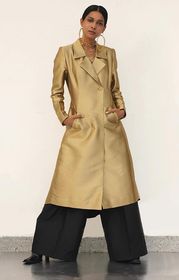I have been closely following the hearings on same sex marriage in the Supreme Court. I am truly amazed at the logical and level-headed arguments presented by the petitioners’ senior advocates Mukul Rohatgi, Abhishek Manu Singhvi, Raju Ramachandran and K.V. Viswanathan, among others. Each one argues on the practicality of marriage, the rights and securities it gives, and why denying it makes an LGBTQI+ person a lesser citizen of India.
It is especially striking that the merits presented are not on the right to love, but the right to live together and enjoy the legal framework that heterosexual couples have. It is a cry for normalcy, for inclusion, and for saying that the queer folk are no different than the straight.
I did not understand what the late designer Wendell Rodricks, also an LGBTQI+ activist, meant when he said that he and his partner, Jerome Marrel, believed in behaving ‘normal’ when with friends. He did not believe in making public his affection for his partner, and he did not want to discuss his relationship in interviews, because “no one asks straight people these sorts of questions”. One has often associated gayness with camp dressing or mannerisms, and has accepted it as an alternate way to exist and express oneself. I argued with him that it was perfectly okay to push the envelope towards acceptance. But, obviously, as we know better, that all sorts of gay are gay.
Camp and cross-dressing have long been a part of gay subculture, so much so that even the fashion business came to be associated with homosexuality. Are there more gays in fashion? Of course not. Christian Dior, Yves Saint Laurent, Gianni Versace and Cristobal Balenciaga were openly gay, but Paul Poiret, Yohji Yamamoto, Ralph Lauren, Emanuel Ungaro are not. Some of the most famous gays in history are Alexander the Great, Alan Turing, Oscar Wilde, and our latest guest, Tim Cook.
But transvestism or cross-dressing has been associated with sodomy for centuries. In 18th century London, inns were filled with ‘mollies’ who wore dresses, gowns, and petticoats to attract sexual partners. Drag queens became part of the entertainment that mocked straight men. The US had banned cross-dressing; people had to wear at least three items of “gender-appropriate clothing” when in public. And by the 19th century, women had taken up men’s clothes—the pant suit especially—to revolt against patriarchy. By the early 20th century, especially after World War I, lesbians in winged collars, monocles and men’s jackets were out and about, especially movie stars like Marlene Dietrich and Greta Garbo (both were bisexual).
When the Chief Justice of India D.Y. Chandrachud gloriously remarked that gender had little to do with genitals, he was actually echoing what Indians have believed since millennia. Androgyny in India has existed since the Vedas. Hindu mythology is full of stories of gods changing gender. Krishna marries Iravan after becoming a woman. Harihar is an incarnation of Shiva and Vishnu combined. King Bhagirath, credited with bringing the Ganga from heaven to earth, was born to two mothers.
Religious festivals in India see devotees cross-dress for rituals. Male devotees of Krishna in Mathura and Vrindavan dress as Radha. Shakti worshippers dress in female costumes. Arjuna dressed as a woman for a year, disguising himself as a dance teacher.
Clothing has already been seeing a paradigm shift where gender-neutral dressing is concerned. Indian clothing traditions borrow from each other constantly. The men’s salwar was adopted when women wanted to ride horses, and the unstitched drape makes for dhotis as well as saris.
Fashion is ready. Are you?
@namratazakaria


